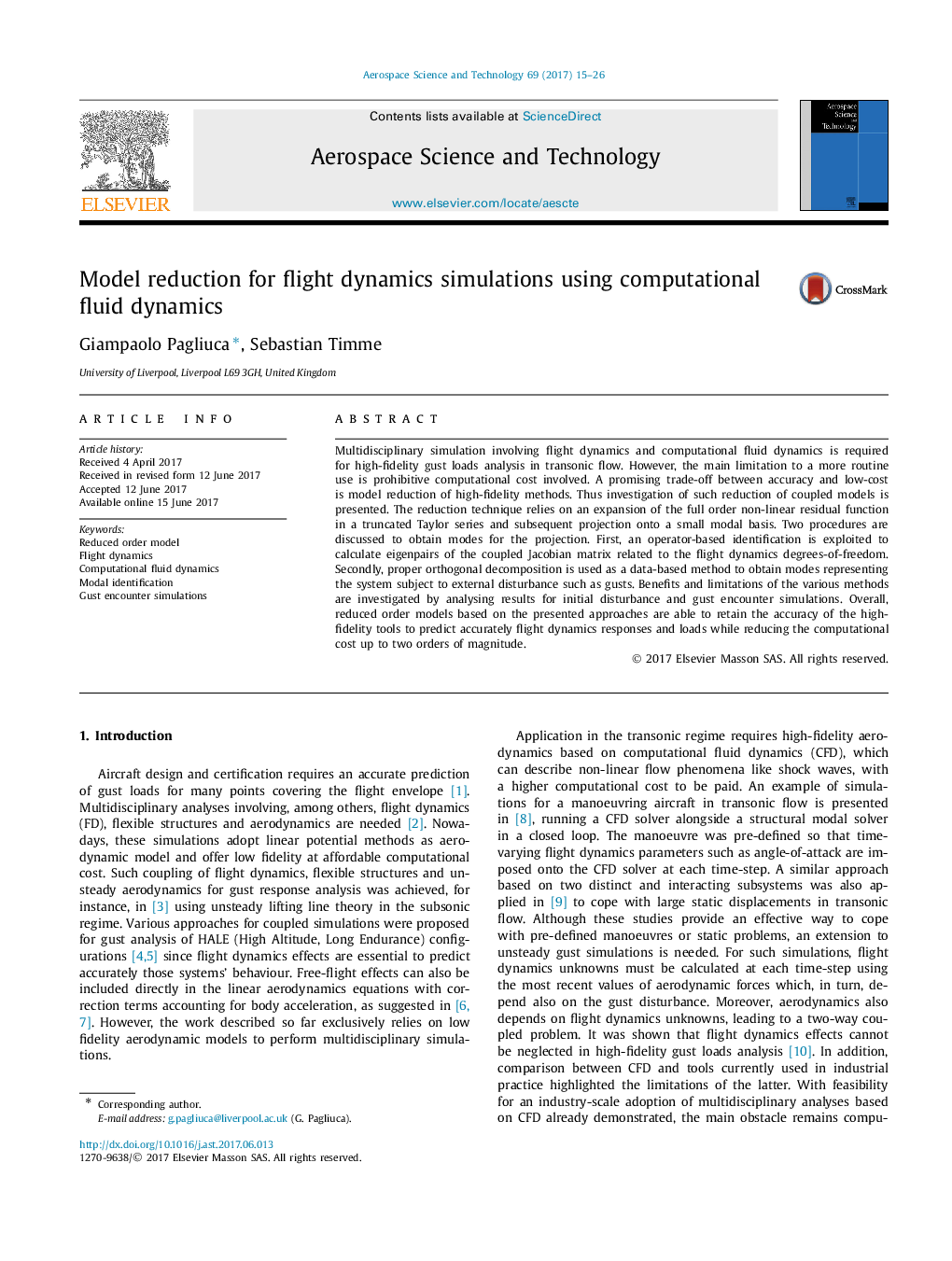| Article ID | Journal | Published Year | Pages | File Type |
|---|---|---|---|---|
| 5472714 | Aerospace Science and Technology | 2017 | 12 Pages |
Abstract
Multidisciplinary simulation involving flight dynamics and computational fluid dynamics is required for high-fidelity gust loads analysis in transonic flow. However, the main limitation to a more routine use is prohibitive computational cost involved. A promising trade-off between accuracy and low-cost is model reduction of high-fidelity methods. Thus investigation of such reduction of coupled models is presented. The reduction technique relies on an expansion of the full order non-linear residual function in a truncated Taylor series and subsequent projection onto a small modal basis. Two procedures are discussed to obtain modes for the projection. First, an operator-based identification is exploited to calculate eigenpairs of the coupled Jacobian matrix related to the flight dynamics degrees-of-freedom. Secondly, proper orthogonal decomposition is used as a data-based method to obtain modes representing the system subject to external disturbance such as gusts. Benefits and limitations of the various methods are investigated by analysing results for initial disturbance and gust encounter simulations. Overall, reduced order models based on the presented approaches are able to retain the accuracy of the high-fidelity tools to predict accurately flight dynamics responses and loads while reducing the computational cost up to two orders of magnitude.
Related Topics
Physical Sciences and Engineering
Engineering
Aerospace Engineering
Authors
Giampaolo Pagliuca, Sebastian Timme,
